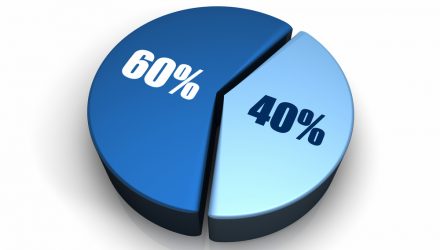The 60-40 stock-bond allocation did a lot of investors favors during the Covid-19 selloffs back in March as investors rushed to safe havens when equities were selling off and rates were dropping. Those low yields are now making investors rethink that 40% bond allocation as they look to other alternative assets to fill the void.
“I don’t think bonds can provide the standard historical returns investors are used to,” said Andrew Sheets, Morgan Stanley’s chief of cross-asset strategy in London. “The starting yield is at a point where that type of return is just not possible. Investors are going to have to lower expectations of 60/40 portfolios, and will have to look elsewhere for what can be in the 40%.”
Investors are starting to look for alternative assets to supplant bonds, such as gold. Gold is riding the tailwind of a strong rally as it’s surpassed the $2,000 per ounce mark most recently.
“You’re going to have to think more creatively about asset allocation and potentially doing different things in your portfolio,” said Michael Moran, senior pension strategist at Goldman Sachs Asset Management in New York.
60-40 or not, investors looking at a mix of equities and bonds can do so with exchange-traded funds (ETFs) like the following:
- Goldman Sachs Equal Weight U.S. Large Cap Equity ETF (GSEW). GSEW seeks to provide investment results that closely correspond, before fees and expenses, to the performance of the Solactive US Large Cap Equal Weight Index (GTR). The fund seeks to achieve its investment objective by investing at least 80% of its assets (exclusive of collateral held from securities lending) in securities included in its underlying index. The index consists of equity securities of large capitalization U.S. issuers. The index is an equal-weight version of the Solactive US Large Cap Index, a market capitalization-weighted index that includes equity securities of approximately 500 of the largest U.S. companies.
- Goldman Sachs Access Investment Grade Corporate Bond ETF (GIGB). GIGB seeks to provide investment results that closely correspond to the performance of the FTSE Goldman Sachs Investment Grade Corporate Bond Index. The fund seeks to achieve its investment objective by investing at least 80% of its assets (exclusive of collateral held from securities lending) in securities included in its underlying index. The index is a rules-based index that is designed to measure the performance of investment-grade, corporate bonds denominated in U.S. dollars that meet certain liquidity and fundamental screening criteria.
For more market trends, visit ETF Trends.








